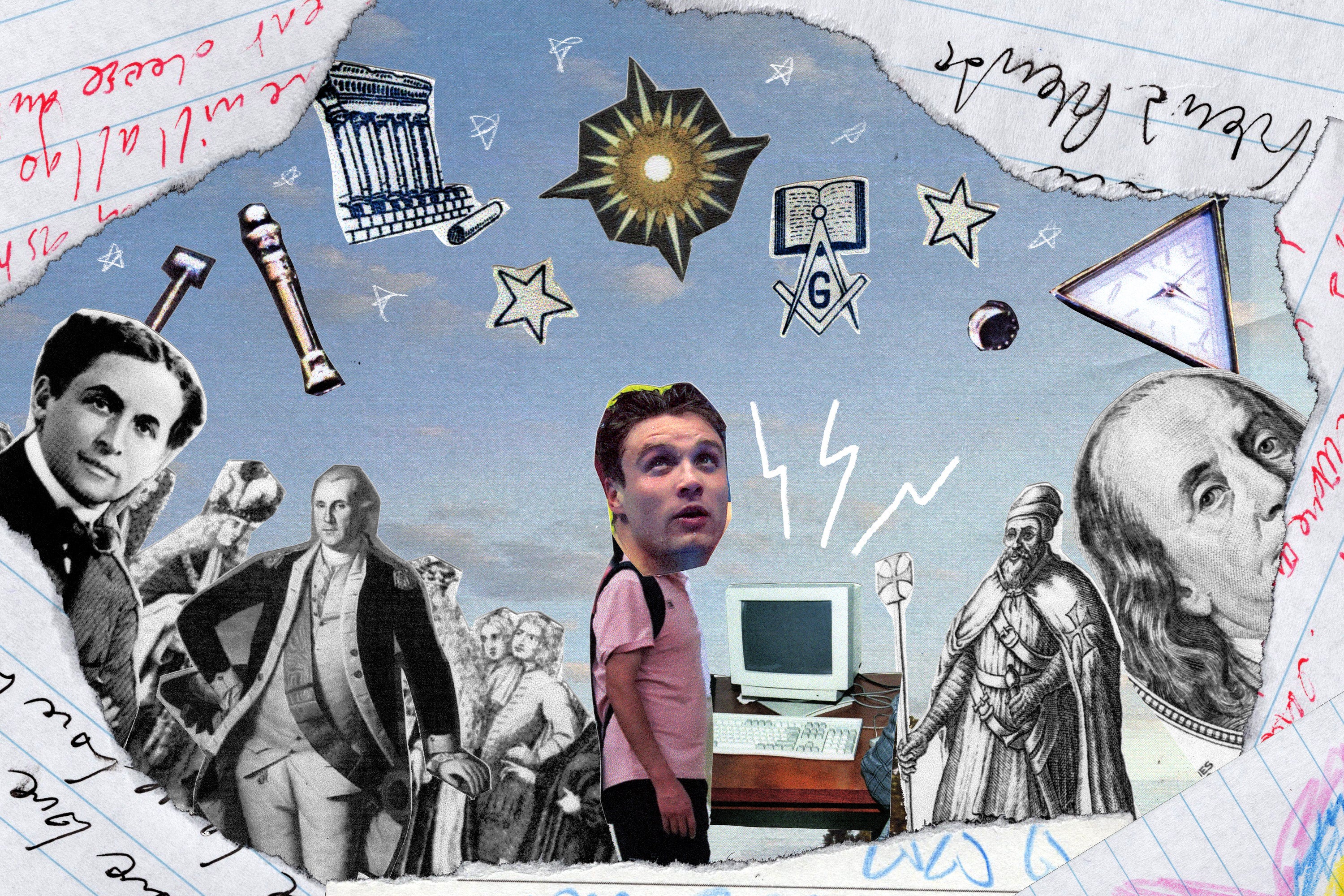The Most Useful Guide to Understanding How to Become a Freemason Step-by-Step
The Most Useful Guide to Understanding How to Become a Freemason Step-by-Step
Blog Article
Exploring the Mysteries of the Freemason: What You Need to Know
The Freemason, a term often shrouded in intrigue and controversy, represents a complex tapestry of historic reality and modern-day misconception. Developed in the late 18th century, this secret society was initially rooted in the Enlightenment's ideals yet has actually given that come to be identified with conspiracy theory theories about elite control. As we browse the beginnings, essential figures, and the raw contrast in between myth and reality, one must think about how these stories affect modern understandings of power and privacy. What may be exposed with a better examination of these components might challenge long-held presumptions regarding the shadows that stick around in our society.
Beginnings of the Freemason
The beginnings of the Freemason are soaked in a blend of historical intrigue and ideological eagerness. Developed in 1776 in Ingolstadt, Bavaria, by Adam Weishaupt, the team was initially developed as a secret culture focused on advertising Enlightenment ideals such as reason, secularism, and the splitting up of church and state. Weishaupt, a teacher of canon regulation, looked for to challenge the prevailing authority of the church and state, which he deemed overbearing establishments suppressing intellectual and individual flexibility.
The Freemason sought to recruit significant members from numerous societal sectors, consisting of national politics, academic community, and the arts, to cultivate a network committed to these Knowledge concepts. The culture run under a shroud of privacy, using coded language and routines to shield its participants from mistreatment, specifically offered the repressive environment of the moment. The Freemason faced substantial resistance from both governmental authorities and spiritual organizations, which saw the team as a risk to their power.
Secret Numbers and Participants
Who were the critical figures that formed the Freemason's very early influence and direction? The Bavarian Freemason, established in 1776 by Adam Weishaupt, became an action to the oppressive social frameworks of the time. how to become a freemason. Weishaupt, a law teacher, imagined the organization as a way to advertise Enlightenment ideals such as factor, secularism, and equality. His first employment efforts consisted of prominent pundits, such as Baron von Knigge, who played an important role in increasing the group's subscription and organizational framework.
One more significant figure was Johann Gottlieb Fichte, a prominent theorist whose ideas on nationalism and education and learning resonated with the Freemason's goals. Although Fichte was not an official participant, his thoughtful bases affected the group's ideological background. Furthermore, numbers like the writer and theorist Johann Wolfgang von Goethe were linked with the wider intellectual motions of the moment, although their direct involvement with the Freemason continues to be debated.
These essential numbers added to the Freemason's early direction, pushing the borders of political and social thought, while their collective efforts aimed to challenge well established standards and foster an environment of modern adjustment in Europe.
Misconceptions vs. Reality
Many misconceptions surround the Freemason, often blending truth with fiction in a method that view it obscures its real nature. The idea that the Freemason proceeds to put in considerable influence over world occasions is a misconception - how to become a freemason.
One more prevalent myth is that the Freemason consists of a network of elite people controling worldwide affairs. Actually, lots of conspiracy theories overemphasize the team's importance, attributing misguided objectives to social trends and occasions. This has actually resulted in an oversimplified view of intricate problems.

Modern Interpretations
Contemporary analyses of the Freemason typically reflect more comprehensive social stress and anxieties and a fascination with secrecy and power. This modern-day lens often associates the Freemason with conspiracy concepts that suggest a surprise elite manages globe events, adjusting governments and economic climates for their very own gain. Such narratives use an ingrained mistrust of authority, especially in times of crisis or social upheaval.

In addition, some modern interpretations frame the Freemason as an allegory for the intricacies of globalization and the interconnectedness of significant individuals and organizations. This point of view motivates an essential examination of exactly how power dynamics operate in today's globe, highlighting the equilibrium in between openness and privacy in administration and company techniques.
Social Influence and Heritage
Influenced by centuries of intrigue, the social influence and heritage of the Freemason prolong much past its historic origins. This secret society, established in the late 18th century, has actually penetrated different facets of popular society, from literary works and film to songs and art. The principle of the Freemason has actually visit here progressed right into a sign of conspiracy theories, typically representing a perceived covert power manipulating global occasions.
In literary works, authors like Dan Brown have woven the Freemason into detailed stories, fascinating visitors with themes of privacy and power. Movies such as "National Treasure" and "The Da Vinci Code" even more continue the appeal of the society, mixing truth with fiction to create engaging stories.
The Freemason's influence also expands into music, with musicians referencing the organization to stimulate styles of rebellion and social critique. This portrayal has actually contributed to an attraction with the concept of clandestine teams managing the bars of power, showing societal anxiousness regarding authority and openness.
Eventually, the Freemason's legacy is an intricate tapestry of myth and fact, shaping assumptions of secrecy and control in modern discourse. Its long-lasting visibility in culture next emphasizes humanity's seasonal quest for recognizing covert facts.
Conclusion
The expedition of the Freemason reveals a complicated interaction between historic realities and contemporary myth-making. Established in the Enlightenment age, this culture aimed to challenge overbearing structures, yet its tradition has actually been overshadowed by conspiracy concepts that recommend elite manipulation. Comprehending the differences between the original suitables and modern interpretations is necessary for understanding the sustaining fascination with the Freemason and its significant influence on social stories surrounding power and secrecy in society.
Report this page